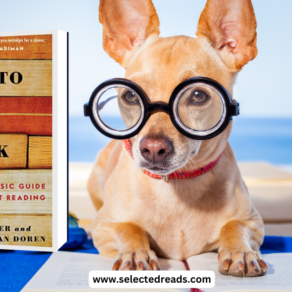Today, we turn our attention to “Silent Spring” by Rachel Carson, a seminal piece that stands at the crossroads of science and literature. As a cornerstone of environmental science literature, this work not only sparked a global environmental movement but also reshaped our understanding of our relationship with the natural world.
This post aims to gently guide you through the essence and impact of Carson’s work, carefully navigating its depths without giving away its most profound revelations. We’ll start with an overview of the narrative, laying out the groundwork for what makes this book a pivotal read. Following this, we’ll delve into the key figures who play pivotal roles in illustrating the book’s themes. Finally, I’ll present a collection of stimulating questions designed to enrich your book club discussions, encouraging a deeper contemplation of Carson’s environmental legacy.
Silent Spring Summary
“Silent Spring,” by Rachel Carson, is a groundbreaking work that dramatically changed the way we view the natural world and our place within it. The book begins with a fable about a small town in the heart of America where all life—birds, fish, and even human children—begins to perish because of the indiscriminate use of pesticides. This allegorical tale sets the stage for Carson’s meticulous examination of the consequences of humanity’s heedless application of chemical pesticides in the environment.
Carson then delves into the science of pesticides, explaining how chemicals like DDT enter the food chain and accumulate in the fatty tissues of animals, including humans, leading to cancer and other diseases. She describes how pesticides, initially considered a boon to agriculture and disease control, have become a blight, causing harm far beyond the pests they were meant to eliminate.
Photo: Amazon
The book meticulously documents the adverse effects of various chemicals on wildlife, domestic animals, and human health. Carson details incidents of pesticide exposure leading to mass die-offs of birds and fish, contamination of food supplies, and increased cancer risk in humans. She criticizes the chemical industry’s propaganda and the lack of rigorous testing of the effects of pesticides on health and the environment.
“Silent Spring” also addresses the broader implications of pesticide use, including the loss of biodiversity, the destruction of natural pest control mechanisms, and the ethical considerations of imposing such risks on future generations. Carson advocates for a shift away from chemical pesticides towards more sustainable and ecologically sound practices.
The impact of “Silent Spring” was immediate and profound. It sparked a public outcry that led to policy changes, including the eventual ban of DDT in the United States and the establishment of environmental regulatory agencies. Carson’s work is credited with launching the modern environmental movement, challenging us to think differently about our relationship with the natural world.
Carson’s narrative is not just a critique but a call to action, urging society to recognize the interconnectedness of all living things and to tread more lightly on the Earth. Her message of wonder and humility before nature’s complexity and resilience resonates as a powerful reminder of the beauty and fragility of our planet.
Related: The Mountain Is You Summary, Quotes, and Book Club Questions
Silent Spring Book Club Questions
For a focused and engaging book club discussion on “Silent Spring” by Rachel Carson, consider these syggestions as a guide for your conversation:
- Opening Scene Reflections: How the idyllic town’s descent into silence sets the tone for the book’s themes.
- Influence of Carson’s Work: Discussion on the aspects of the book that were pivotal in sparking environmental awareness and action.
- Scientific Arguments: Evaluating the accessibility and persuasiveness of Carson’s presentation of scientific data and research.
- Ethical Considerations: Exploring the ethical dilemmas posed by human environmental impact as highlighted in the book.
- Humanity vs. Nature: Reflecting on the ongoing conflict between human progress and natural preservation.
- Government and Industry Accountability: Debating the roles and responsibilities of government and industry in environmental health and safety.
- Effects of Pesticides: Discussing the book’s documentation of pesticide impacts on health and the environment, highlighting standout examples.
- Technological vs. Natural Solutions: Considering Carson’s preference for natural balance over chemical solutions in current environmental strategies.
- Book’s Legacy and Contemporary Relevance: Assessing the book’s impact on modern environmentalism and its relevance to today’s challenges.
- Inspired Actions: Sharing personal or suggested community actions to address environmental issues inspired by the book.
Final thoughts
In closing, it’s my hope that this brief exploration into “Silent Spring” has piqued your interest. Rachel Carson’s landmark text is more than just a book; it’s a powerful testament to the interconnectedness of all living beings and the impact of human actions on the Earth. If you haven’t yet delved into its pages, I strongly encourage you to do so.









